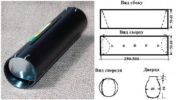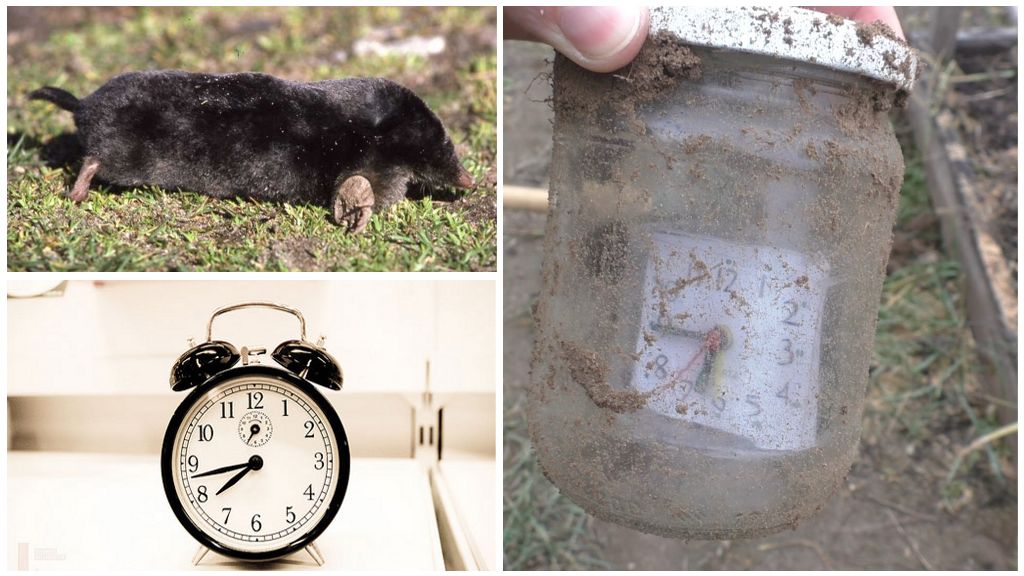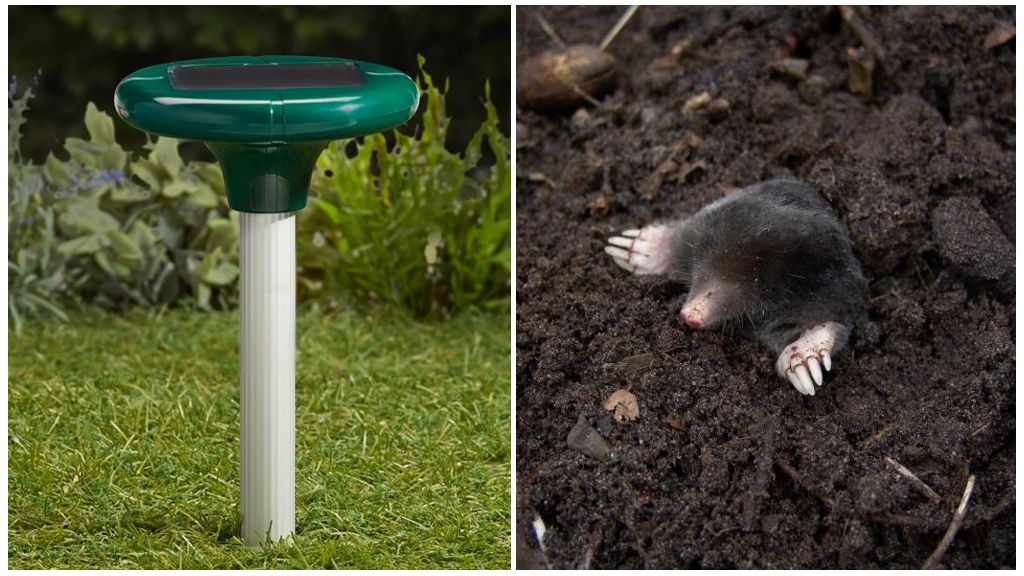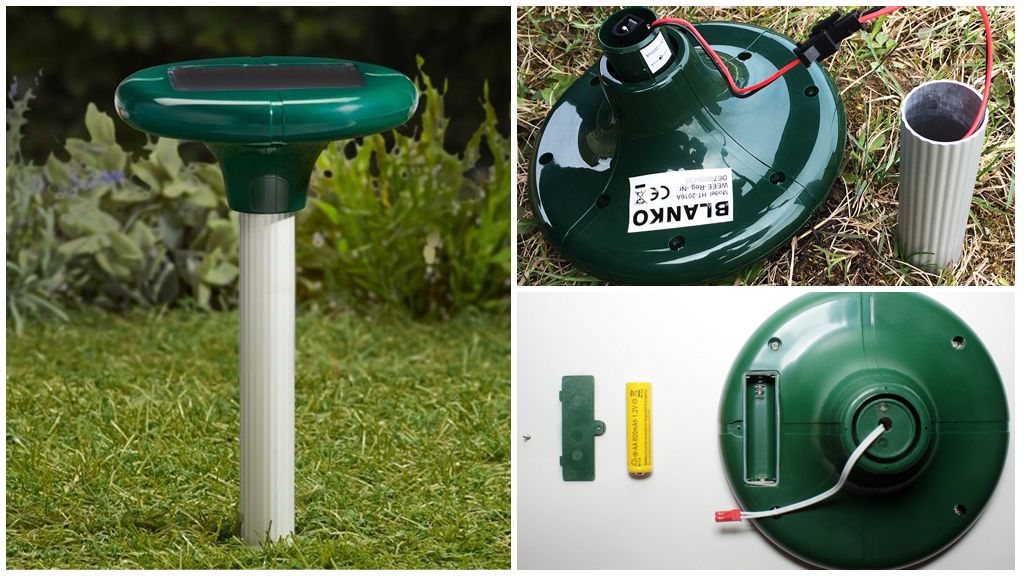- Mole trap
- Zhovolovka pipe
- Bottle trap
- Hunting pits
The gardeners, on whose plot the moles settled, are often lost what they should do with the invaders. Moles - animals useful in nature, but in large quantities cause severe damage to the garden. It is impossible to catch them, as they move underground. While digging in one corner of the garden, the mole has already reached the opposite. Poison moles very difficult. These are obligate predators that consume only live food. The earthworm stuffed with poison can die before the animal finds it. Therefore, only traps from moles and repellent deviceswhich may be purchased or homemade appliances.
What are the traps
The mole trap can be of two types:
- lethal;
- live trap.
Most of the lethal traps of industrial manufacture, since their manufacture requires factory parts of a specific shape, size and industrial processing.
Lethal
- "Scissor trap";
- mole trap;
- plunger trap;
- wire loop;
- device piercing the body of the animal from above.
Of all these devices, do-it-yourself is the easiest way to make the latter. And the most effective and easy to install is a trap. But to make a trap for moles with their own hands according to the model of the factory, the average summer resident will be difficult. Much easier to make an analog to capture a living animal.
The wire loop can be made independently. She strangles the animal when trapped. The scheme is given below.
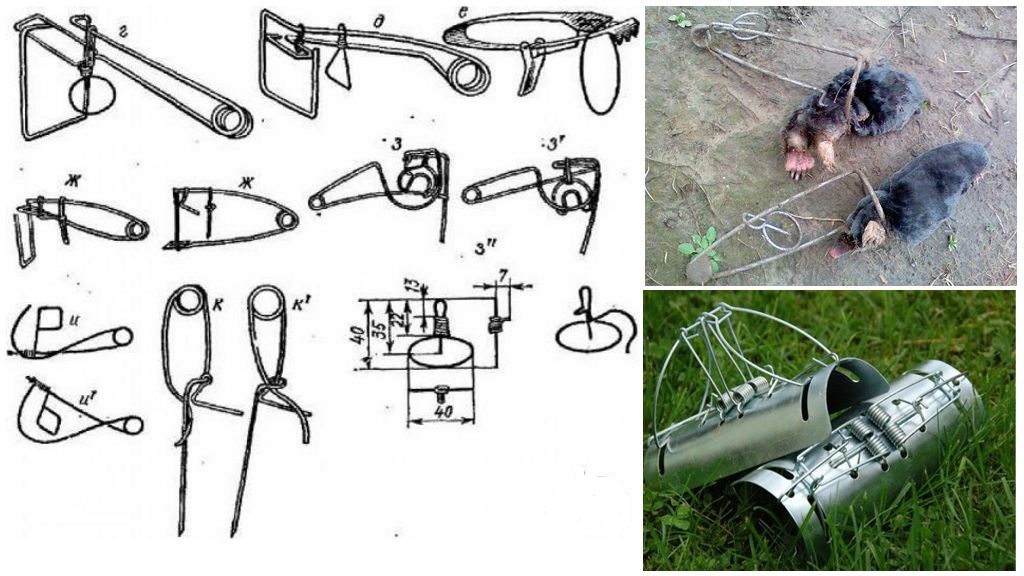
On a note!
Almost all of these traps, except for the trap, do not work well when stones or earth get into moving parts.
"Pitchfork"
The last, most simple to manufacture device, in appearance resembles a pitchfork with a metal spatula welded to them. This is an analog of this type of industrial trap.
These "pitchforks" are made by summer residents by their own understanding. Drawings are missing. And this is good, since it’s not difficult to kill a mole, it’s harder to strain and carry it away. Still, moles benefit the ecosystem more than harm.
The extreme teeth of the “pitchfork” are the “legs” of the trap that hold it upright. The working part is medium. It is a hollow tube into which a harpoon is inserted. A harness is worn on the harpoon, which ends are attached to the harpoon and the tube. When guarding the trap, the spring is stretched, and during the descent, it is compressed, and the harpoon pierces the body of the animal with force.
The “trigger” is the same “spatula fixed movably. It has a groove that allows the harpoon to be held in the upper position. When the mole throws the earth on the spatula, it moves and the harpoon falls. But such a trap will require serious skills in working with iron and the ability to weld parts, so it makes sense to consider simpler traps to make, accessible even to single summer residents.

Feedback
I tried to put a trap from the store in the form of a pipe. Moles are not so bad bypass. I found on YouTube a video on how to make a trap for a mole in the form of a pitchfork with a harpoon. Carried with the manufacture of two days. So not only was it difficult to establish for it to work normally. Moles are also different.There, the principle is based on the fact that a trap is triggered when the animal throws the earth onto this trigger blade. And different moles throw the earth at different distances. Tortured to change the remoteness of the "shoulder" from the trigger device. Yes, go and chase after these moles. Every time you have to dig this trap again. He chased after one specimen for two weeks, he rummaged the beds no worse than him. Spit and went to the dug in banks.
Maxim, s. Zhuravkovichi
The disadvantages of all such mechanical traps are that each time they have to be reinstalled, digging in a new place. When land or stones get into moving parts, traps do not work correctly. When catching one mole, these traps no longer work until they are set again. You can catch as many animals in the live trap as they fit in the tank. And to kill animals only because they lead their usual way of life is wrong. It is not they who invaded our house, it is we who destroy their habitat.
Live traps
In the manufacture of such traps for moles with their own hands, only one quality is required: the absence of fear of moles. The most popular trap is a plastic water pipe.
Trumpet
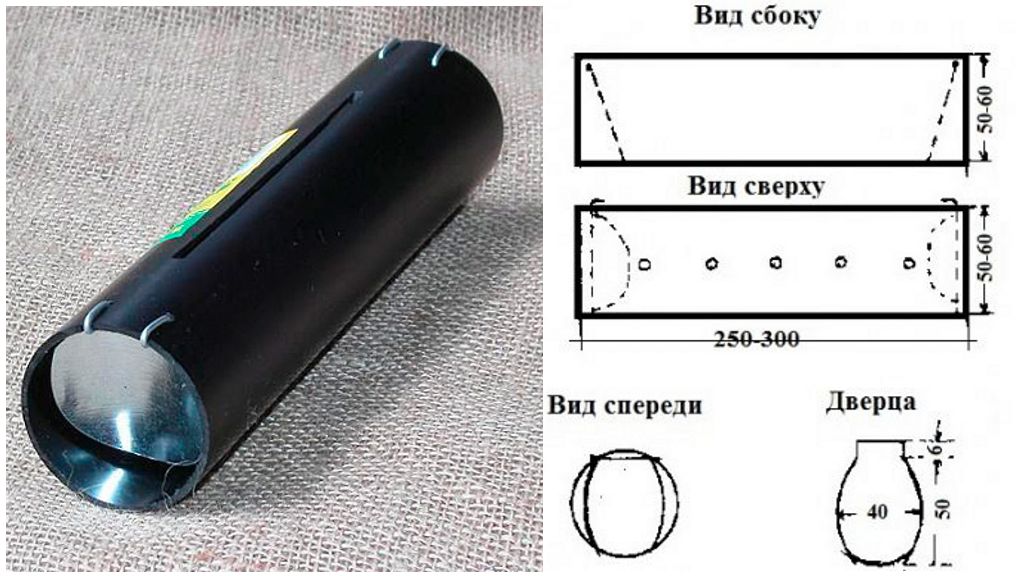
Why the name “Solomon's trap” stuck to this pipe is a mystery. But to make it easy. For manufacturing you will need:
- water pipe;
- tin can with both bottoms;
- piece of wire;
- drill;
- scissors for metal or which do not mind blunting.
The diameter of the pipe must be exactly the size of the mole. Usually it is about 6 cm.
How to make:
- Cut a piece about 50 cm long from the pipe. On both sides of the segment, on the side that will be the top, drill 2 holes. Holes are needed to secure the wire.
- From the tin can cut the bottoms.
- The door must be larger than the diameter of the pipe, as it is installed with an inclined inward. The side view diagram shows this. To secure the door to the wire, you also need some allowance. Accordingly, the height of the door will not be 60 mm, but 70-80 mm. The width of the door is cut a little narrower than the diameter of the pipe.
- Bend the upper edge of the door around the wire.
- After that, remove the wire and assemble the entire structure, sequentially threading the wire through the hole in the pipe, mounting on the door and the second hole in the pipe.
- Bend the outer ends of the wire so that the door does not break at the wrong time.
To install the pipe, you need to open the mole and replace the tunnel dug by the animal with your own from the pipe. Open the course carefully to inflict the least damage and not scare the animal. It is better to do this garden scoop.
The pipe is set in motion. From above, so that the sun does not exactly illuminate the tunnel, close the trap with a piece of dense material and cover it with earth.
On a note!
The pipe must be checked periodically. If you do not want to kill the animal, you need to check every 12 hours, otherwise the mole will have time to starve to death. For more effective capture, you can put a bait from earthworms in the mole trap.
Plastic bottles
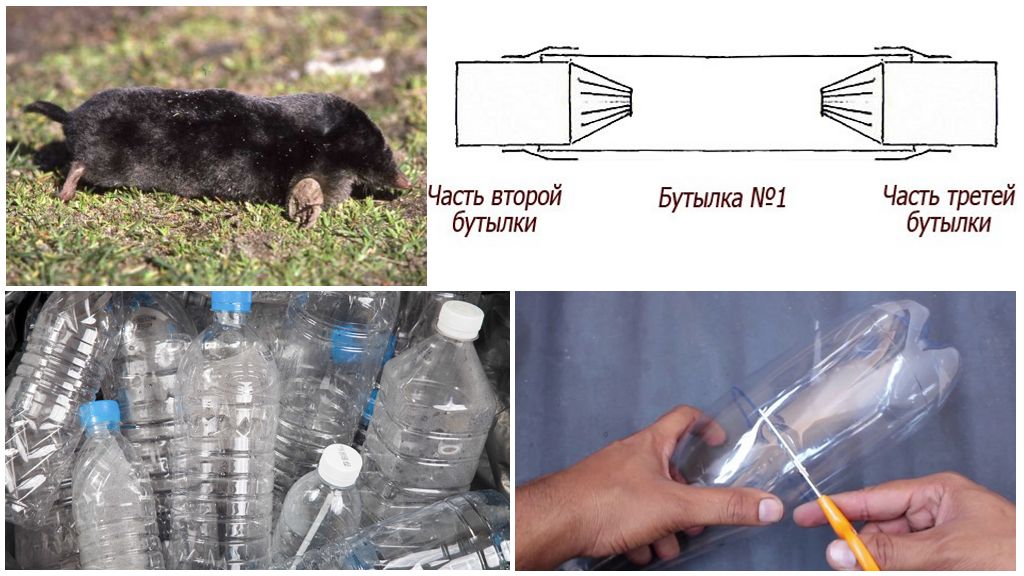
A very quick and cheap way to make an analogue of Solomon's trap. A bottle trap was arranged on the principle of a fish top.
To make a trap for moles from a plastic bottle, you will need 2 or 3 disposable containers of 1.5 liters. For the one-sided version, you need 2 bottles, for the two-sided one - 3. In the one-sided version, the bottom of the main bottle is left in place. These are all differences, so you need to consider a two-way option.
- From one bottle make the "body" of the pipe, cutting off the top and bottom.
- From the other two, the upper parts are needed, cut off much lower than the beginning of the narrowing to the neck.
- The neck itself is cut off too.
- In the remaining part, ribbons are cut into the tapering part up to the expanding part. Then the finished parts are pressed tightly into the main bottle, as shown in the diagram.
- The mole is set in the same way as the pipe.The plastic is slippery and there is no need to fix the inserted parts. The animal, crawling along the way, will easily open the "ribbons" and fall into the trap. He will not be able to get back.
Hunting pits
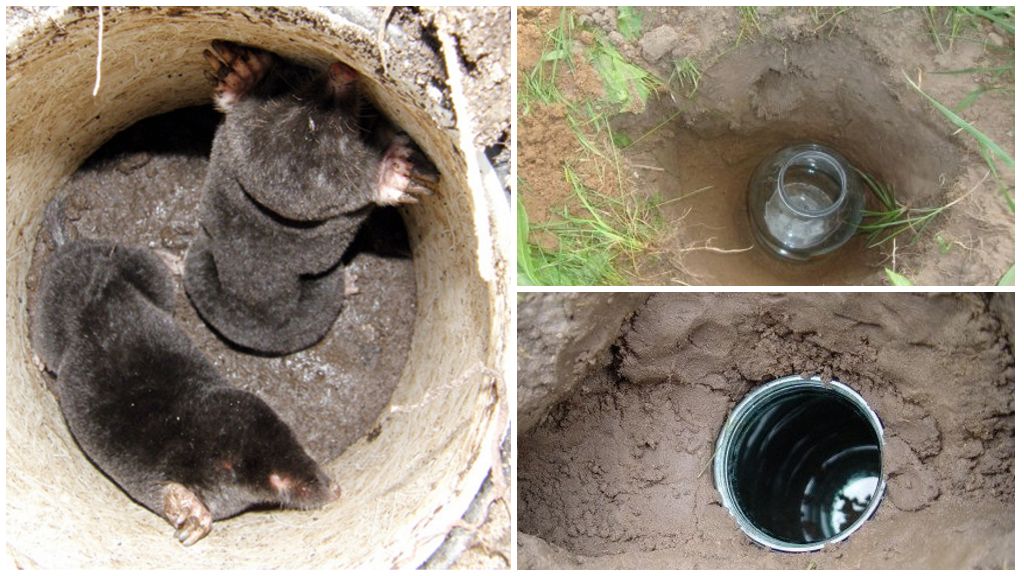
To do this, you need a 3-liter jar with a wide enough neck so that you can take out a mole clamped in a fist from there. The jar is buried below the mole so that its neck falls flush with the floor of the tunnel. It is necessary to dig a hole carefully so as not to bring down the course. The jar is put at the bottom of the pit and sprinkled so that there are no pits between the current move and the neck of the jar. At the top of the move close plywood.
On a note!
Not only moles fall into such a trap, but also wandering in wormholes rodents.
The advantages of live traps are that the animals that are very useful in nature have a chance to stay alive. Cons in the need for frequent verification and problems of release into the wild. The mole must be carried far from the site, otherwise it will return. But you can kill the animal, only it will have to be done manually.
The minus of the trapping can-pit is that you have to get the animals out of it with your hands, so as not to spoil the high-quality trap. But if they manage to die of hunger, there will be no problems with their removal from the can.
Feedback
I tried to put homemade traps from the pipes, but either my hands are crooked, or the moles sensed something. Not a single one was caught. I did not believe in the bank, but I tried it out of hopelessness. It turned out to be the most effective of all tried. I buried it under a mole, sprinkled it with earth and compacted everything tightly. I placed planks on the sides of the excavated entrance to narrow the passage to the “usual molehill”, otherwise it turned out a niche in this place. Top covered with plywood and sprinkled with earth. Only the first jar of the week caught 3 moles and a vole. Now buried several more cans in other places.
Elena, Yegoryevsk
Three shovels
A method of catching moles from a series of curiosities and for those who have nothing more to do in the country. The same can be attributed to traps, although it is more correct to ambush. This method requires 3 shovels. We stick the first across the mole and trample the earth on both sides. Now we wait until the animal appears. Its appearance will be noticeable by the movement of the earth.
When the animal appears - is unknown. If you are lucky and the mole was discovered, we stick in the second shovel behind the mole. Now with a third shovel we quickly dig up the animal, until it has time to dig another move.

